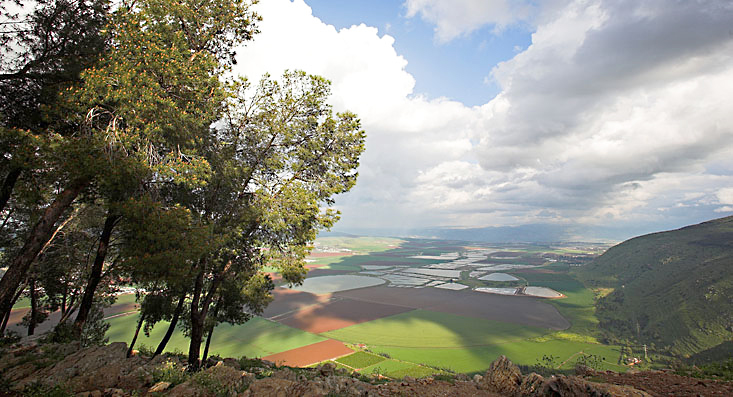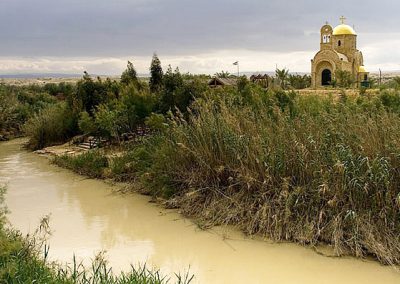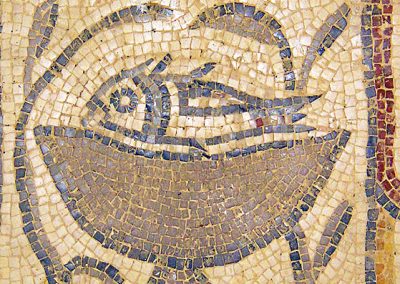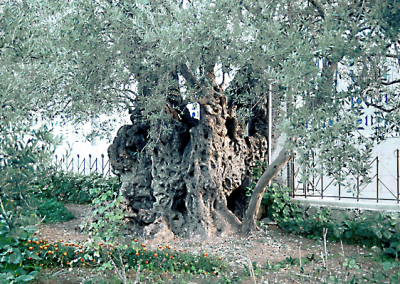
Bible, History, Archaeology
Bible,
History,
Archaeology
Parables,
Old and New Testaments
Introduction
This is one of the literary or public speaking methods used to illustrate a moral or religious truth by means of a comparison drawn from everyday life. In the Scriptures, it is also used to present a teaching. There are no clear-cut boundaries between a parable (from the Greek παραβολή) a simile and a metaphor. Metaphors are generally shorter than parables.
Examples:
Metaphor : «you are the light of the world» (Matthew 5:14).
Similarity : «like a lamb mute before its shearer».» (Acts 8:32).
Parable : «the Kingdom of Heaven is like leaven, which a woman took and put into three measures of flour, until the dough was all leavened.» (Matthew 13:33).
Parables in the Old Testament or First Covenant
When a prophet needs to call out an important figure who is unwilling to acknowledge his guilt, a clever parable can clear his conscience. This is how the prophet Nathan uses the parable to reproach King David for his adultery and the murder of Uriah the Hittite (2 Samuel 12:1-14). Other examples are cited in the Old Testament, such as the prophet Jeremiah's criticism of King Zedekiah's conduct.
Examples of parables in the Old Testament:
«The trees asking for a king» (Judges 9, 8-20); «The poor man's sheep» (2 Samuel 12, 1- 14); «The widow whose one son has killed the other» (2 Samuel 14, 4-20); «The soldier who lets his prisoner escape» (1 Kings 20, 35-42) ; «The thistle asking for her son the hand of the cedar's daughter» (2 Kings 14, 9-11); «The vineyard» (Isaiah 5, 1-7); «Two eagles and a vineyard» (Ezekiel 17, 1-10); «The lion cubs» (Ezekiel 19, 1-9), and so on.
 Parables in the New Testament or New Covenant
Parables in the New Testament or New Covenant
In the New Testament, Jesus presents much of his teaching in parables. He used them right from the start of his ministry (Mark 3:23; Luke 6:39; 7:40-50). Parables play an important role in his discourses (Matthew 13:3; Mark 4:2). According to commentators, there are over 40 of them in the Gospels.
Image opposite General landscape of Galilee today, witness to the preaching of Jesus of Nazareth © Doron Nissim.
Jesus uses images from everyday life to challenge his listeners, prompting them to reflect and draw their own conclusions. This means of expression makes the moral and spiritual values of the kingdom of God more accessible. Their understanding is only valid for certain listeners, many of whom do not always grasp the deeper meaning of the parables.
Christ knows that some of the crowd are not prepared to accept certain truths. If the time has come to explain these values to the disciples, who must announce them after his departure (Mark 4:33-34), the truth is «hidden» for those who listen to him with their prejudices. Faced with certain ill-intentioned people, spying on him to catch him at fault, and a crowd that is sometimes fickle, Jesus measures his words (Mark 4:11-12; 13:10-16).
A general view of Lake Tiberias, the scene of many episodes in the life of Jesus of Nazareth © Doron Nissim.
 Three groups of parables by Jesus of Nazareth
Three groups of parables by Jesus of Nazareth
Image opposite I am the true vine, and my Father is the vinedresser...». John 15:1.
A bunch of grapes. 1824471857 J.F.G. PHOTO.
There are three groups of parables in the teachings of Jesus Christ:
- A first group of eight parables revealing the nature of the Kingdom of Heaven (Matthew 13:1-50; Mark 4:26-29). Jesus adds a parable applied to his disciples (Matthew 13, 51- 52). It was on the shores of Lake Gennesaret that Christ seems to have presented them (Matthew 13, 1-53).
These similarities contain six fundamental truths: The sower and his seed Different categories of listeners receive the Gospel in different ways.
Tares and wheat, leaven and fine flour evil creeps in among the good sown by the Gospel.
The seed secretly growing, mustard seed, sourdough the work that is accomplished and grows both visibly and invisibly.
The hidden treasure ; the grand prix pearl The values of the kingdom, where entry is by decision and sometimes by sacrifice.
The net that gathers all kinds of fish A mixture that will persist in the religious world until the end of time.
All this will end, not with the conversion of all, but with the judgment and separation of the good from the bad (Matthew 13:30-39-43; 49-50).
 Image opposite An old photo of fishermen on the shores of Lake Tiberias. © DR.
Image opposite An old photo of fishermen on the shores of Lake Tiberias. © DR.
- A second group of 19 parables about, illustrates the impact of the Gospel (Luke 10:25-19, 48, except Luke 13:18-21).
Jesus spoke most, if not all, of these parables after leaving Galilee, during the six months between the Feast of Tabernacles and his last Passover: parables of the «Good Samaritan», «The Unwelcome Friend», «The Rich Fool», «The Servants Waiting for their Master to Return», «The Narrow Door», «The First Place at Table», «The Feast», «The lost sheep», «The lost drachma», «The prodigal son», «The unfaithful steward», «The rich man and Lazarus», «The useless servants», «The unjust judge», «The Pharisee and the sinner», «The mines». All these parables evoke the behavior of those who seek and wait for the Kingdom of Heaven.
- Finally, the third group of five parables (six, counting Matthew 24:32-35) about judgment and the parousia; They are given during the last week that Christ spends in Jerusalem.
Parousia : advent or parousia (from Greek parousia) means «appearance, arrival, presence, return». This word appears 24 times in the New Testament; of the 24 mentions, 16 refer to the Christian hope of Jesus Christ's return at the end of time. For the other mentions, Paul uses it to speak of his presence with Stephanas in Corinth and Philippi (1 Corinthians 16, 17; 2 Corinthians 10, 10; Philippians 2, 12), the arrival of Titus in Corinth (2 Corinthians 7, 6,7), his return to Philippi (Philippians 1, 26) and the coming of the Ungodly (2 Thessalonians 2, 9).
The attitude of the first «called» people can be seen in the parables of the «two sons» and the «wicked vinedressers» (Matthew 21:28-46). «The wedding of the king's son», «The ten virgins» and «The talents» highlight the need for wedding attire, vigilance and fidelity (Matthew 22:1-14; 25:1-30).
Interpreting the parables requires a careful examination of the context surrounding each discourse and of Jesus' intended purpose; we can see that their teaching is universal and still relevant today.

«I am the good shepherd» John 10:14. A shepherd feeding his flock in the Judean desert © Doron Nissim.
The Qasr el Yehud, a Greek Orthodox church near the Jordan where tradition places the place where John the Baptist was baptized. © Doron Nissim.
The Qasr el Yehud, a Greek Orthodox church near the Jordan, where tradition places the place where John the Baptist was baptized.
Mosaic from the Church of St. Stephen at Umm ar-Rasas, Jordan, 8th century © Kareen Truschel.
Mosaic from the Church of Saint Stephen in Umm ar-Rasas, Jordan, 8th century.
An aerial view of the Temple Mount. In the center of the image, you can see the Kotel, Judaism's holiest site. © D.R.
An aerial view of the Temple Mount. In the center of the image, you can see the Kotel, Judaism's holiest site.

 Parables in the New Testament or New Covenant
Parables in the New Testament or New Covenant
 Three groups of parables by Jesus of Nazareth
Three groups of parables by Jesus of Nazareth Image opposite An old photo of fishermen on the shores of Lake Tiberias. © DR.
Image opposite An old photo of fishermen on the shores of Lake Tiberias. © DR. 


